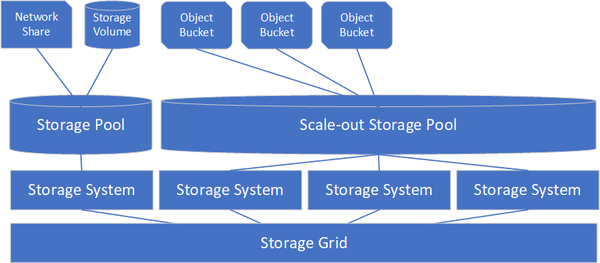QuantaStor Internal Architecture: Difference between revisions
mNo edit summary |
|||
| Line 5: | Line 5: | ||
QuantaStor's built-in storage grid technology enables multiple QuantaStor servers to be combined together so that they can be managed as one. Grid formation is done by creating a Storage Grid on a first QuantaStor server and then adding additional QuantaStor servers to the grid in a batch or one at a time. Once a Storage Grid is formed a number of advanced features are enabled like Remote Replication, Clustering, and more. No additional software is required to manage a grid of systems as all management functions for all systems are linked. QuantaStor's grid technology maintains a distributed configuration database that spans all systems so that configuration changes made to any system are communicated to all systems within a few seconds. | QuantaStor's built-in storage grid technology enables multiple QuantaStor servers to be combined together so that they can be managed as one. Grid formation is done by creating a Storage Grid on a first QuantaStor server and then adding additional QuantaStor servers to the grid in a batch or one at a time. Once a Storage Grid is formed a number of advanced features are enabled like Remote Replication, Clustering, and more. No additional software is required to manage a grid of systems as all management functions for all systems are linked. QuantaStor's grid technology maintains a distributed configuration database that spans all systems so that configuration changes made to any system are communicated to all systems within a few seconds. | ||
[[File:grid.png | [[File:grid.png|600px]] | ||
== Storage System == | == Storage System == | ||
Revision as of 19:41, 21 March 2019
This section provides an overview of the terminology used in the QuantaStor storage model and how elements of the model relate.
Storage Grid Technology
QuantaStor's built-in storage grid technology enables multiple QuantaStor servers to be combined together so that they can be managed as one. Grid formation is done by creating a Storage Grid on a first QuantaStor server and then adding additional QuantaStor servers to the grid in a batch or one at a time. Once a Storage Grid is formed a number of advanced features are enabled like Remote Replication, Clustering, and more. No additional software is required to manage a grid of systems as all management functions for all systems are linked. QuantaStor's grid technology maintains a distributed configuration database that spans all systems so that configuration changes made to any system are communicated to all systems within a few seconds.
Storage System
A QuantaStor server is referred to as a Storage System but you'll also see it referred to via other terms like "node" in the context of Storage Grids or clusters. A group of systems combined to form a grid is called a Storage Grid.
